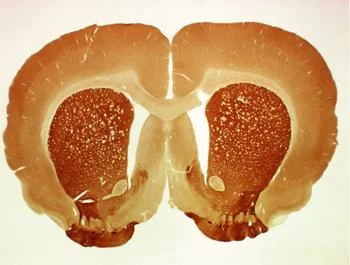Answer: The Evans blue extravasation test is a measure of any pathological permeability of the blood-brain barrier.
From https://step1.medbullets.com/neurology/113003/blood-brain-barrier
The blood-brain barrier (BBB) is a specialized anatomical structure that separates the contents of the blood vessels from brain tissue. In a normal brain, it serves a protective function that limits the amount of infectious agents that enter the brain.
However, in some pathological conditions, the blood brain barrier may become permeable to molecules in the bloodstream. For example, traumatic brain injury such as hemorrhagic stroke, Alzheimer's disease, meningitis, or multiple sclerosis may result in a “leaky” blood brain barrier. In this case, large molecules and cells pass from the bloodstream and enter the brain, which may result in some symptoms of these diseases.
Evans blue is a dye that binds very tightly to serum albumin, a major protein in the blood. Albumin itself serves to maintain the osmolarity of blood.
In the normal physiological condition, albumin is not found in the brain. When Evans blue is injected in the bloodstream, it remains in the circulatory system and does not pass into the brain. However, in a brain where the blood brain barrier is compromised, the Evans blue-bound albumin will pass from the bloodstream into brain tissue. Upon preservation of tissue and future examination, there will be blue dye observed in the brain.
The term “extravasation” refers to the leaking of a substance out of the container which is intended to hold it.
For a more detailed protocol, follow the link provided here (An in vivo Assay to Test Blood Vessel Permeability).










